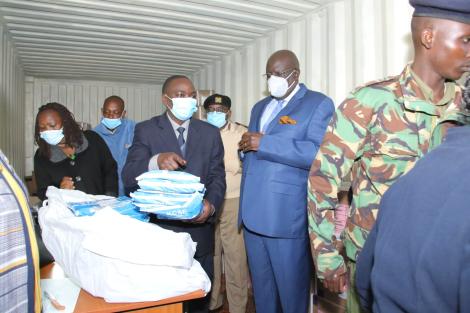According to Prof George Magoha, Cabinet Secretary for Education, Kenya Certificate of Primary Education (KCPE) marking is still ongoing in some counties, but it has already been completed in others.
“The marking of KCPE in Nairobi, Kiambu, Eastern and Western counties has been completed. In the remaining counties, the exam marking work is almost complete,” Magoha said.
Prof Magoha said that the Kenya National Examination Council (KNEC ) is on track to complete the marking of the Kenya Certificate of Primary Examination (KCPE) within a time frame of two weeks.
Prof Magoha said that the marking of scripts of 12 million candidates has started from day one and will be completed in due course.
If so, it will be the second consecutive year that the results of KCPE will be released within two weeks of the completion of the tests.
According to Kenya National Examination Council (KNEC) sources, the acquisition of the modern Optical Mark Recognition (OMR) system, which scores papers electronically, has eased the marking of multiple choice questions.
The process of capturing the marked data from the answer sheets of the candidates using special scanning is known as OMR.
The machines use a dedicated scanning device that shines a light beam onto the paper.
Contrast reflection at predetermined positions on a page is then used to locate marked areas, which reflect less light than blank areas of paper.
Unlike the previous technology, which took several hours, the new machines mark the script in batches of 100 or 200 sheets.
Magoha had earlier said in an interview that the council’s old machines were about 20 years old and had become obsolete.
“This was the reason why it took a long time to compile and eventually release the results of the previous years. But this time, the results will be accurate and precise,” Magoha said.
He claimed that the old machines were prone to errors, which had reduced efficiency in marking and issuance of results.
According to Magoha, OMR machines have improved the marking accuracy and reduced human interaction with the candidate results.
According to insiders, the new marking machine has been fine-tuned to speed up the matching of Kiswahili Insha and English Composition Marks, which was earlier done manually by the examiners.
The two papers are still graded by hand. However, the physical count is no longer used to calculate the grade.
Marked scripts are scanned by OMR machines to verify the marks in record time as compared to previous years, when marking was done manually.
After marking the insha and composition scripts, examiners will hand over the paper to the new machine, which will do electronic mark tallying in record time.
Apart from reducing copying, the examination officials said that they are relying on better marking efficiency to release the KCPE results as compared to earlier.
OMR is one of several security measures that will improve the accuracy and reliability of results.
Free food and accommodation to KCPE candidates in volatile areas was given.

